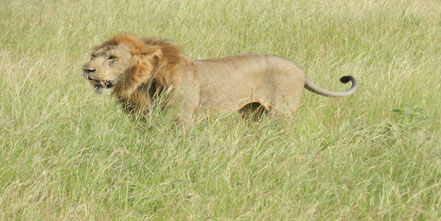can i participate in lion research tracking in queen elizabeth national park in uganda in 2024/2025

The lion research track is an adventure activity that is only done at Kaseyi Plains of Queen Elizabeth National Park, which is situated within four districts in the western region of Uganda; these districts include Kasese, Rubiri, Kamwenge, and Rukungiri. Queen Elizabeth National Park is Uganda’s second-largest national park after Murchison Falls National Park, which receives many visitors due to the mighty Murchison Falls. Click here to see mountain gorilla trekking safaris
Queen Elizabeth National Park has a wide range of biodiversity and wildlife animals, such as the Big Five: lions, buffaloes, herds of elephants, warthogs, a huge population of hippos, the Sitatunga giraffes, antelopes, leopards, waterbucks, mongooses, crocodiles, oribis, zebras, and Uganda kobs, among others. Click here to view our recommended mountain gorilla trekking safari
Queen Elizabeth national park is commonly famous for the tree-climbing lions at the Ishasha sector, which has attracted lion research activity and is among the main reasons why some travelers visit Queen Elizabeth National Park. Lion research tracking is an interesting tourism activity where travelers track lions in their natural habitat while enjoying their behaviors and life patterns. During the lion research tracking, travelers learn more about the lions' lifestyle, such as their feeding habits and social behavior.
Lion research tracking tourism activity is being operated by the Uganda Carnivore Project, working together with the Uganda Wildlife Authority to monitor the flooding populations, movement, and behavior of lions in all national parks in Uganda. Uganda's carnivore project is in charge of all the carnivores in Uganda, such as the nocturnal leopards, hyenas, and cheetahs, among others. Only a maximum of four travelers are allowed to participate in lion research tracking activities with the Uganda carnivores project researchers.
Lion research tracking encounters bring travelers closer to the beautiful lions in their natural environment, thus giving travelers a greater opportunity to take clear pictures and videos with these kings of the jungle while taking off tracks.
Lion research tracking is only done in Queen Elizabeth National Park in the Kasenyi Plains sector of the park, which has a high concentration of wildlife species, giving visitors the opportunity to enjoy game drives of other wildlife such as buffaloes, bushbucks, elephants, warthogs, zebras, Uganda kobs, hyenas, waterbucks, and huge populations of lions.
The Lion Research Track is a tourism activity in the Kasenyi plains of Queen Elizabeth National Park that is open to all travelers who are 15 years and above year-round. Travelers can engage in the activity at any time. However, due to the high demand from many travelers and the fact that only four travelers are allowed to participate in the activity per day, we advise travelers to book prior to their travel date so they do not miss out on the lion research tracking permits.
How is lion research done in the Kasenyi Plains in Queen Elizabeth National Park?
Lion research is conducted early in the morning. You will wake up early and board your safari vehicle provided by your local tour operator in Uganda, which will help you during the lion tracking. Kasenyi Plains lions spread all over the park, but lion tracking is done along the plains. This is due to the fact that Kasenyi Plains is mainly dominated by the savannah grassland, which makes observing lions easier.
Kasenyi plains lions move in small groups called prides, which can contain 3–25 members; however, the number of lions’ pride might increase during the research program.
During the lion research along the Kasenyi Plains, it is easy to notice any distressing noises from the lions, such as loud roars and lions mourning when they mean gathering for hunting or calling for prey. The bent, tall grass is a sign that shows the trail that lions leave behind. Lions mark their territory by leaving dark mane hair in the bushes and urine, which helps park rangers track down these lions during lion research.
How to get lion research tracking permits in Uganda in 2024/2025
Uganda’s lion research permits are only restricted to people who are 15 years of age. Lion research permits are issued by the Uganda Wildlife Authority's offices in Queen Elizabeth National Park.
The lion research permit costs $50 per traveler per day, or $10,000 for the East African community. Lion research is best done early in the morning or later in the evening at around 4 p.m.
During the Kasenyi Plains lion research, there are 95% chances of seeing a good number of lions compared to any other national park in Uganda. Kasenyi Plains Lions research tracked down the radio colors around their necks. Queen Elizabeth National Park offers other exceptional activities that travelers can participate in to supplement the lion research, such as viewing the tree-climbing lions of the Ishasha sector, boat cruises on Kazinga Channel, chimpanzee trekking at Kyambura Gorge, and unlimited game drives.
